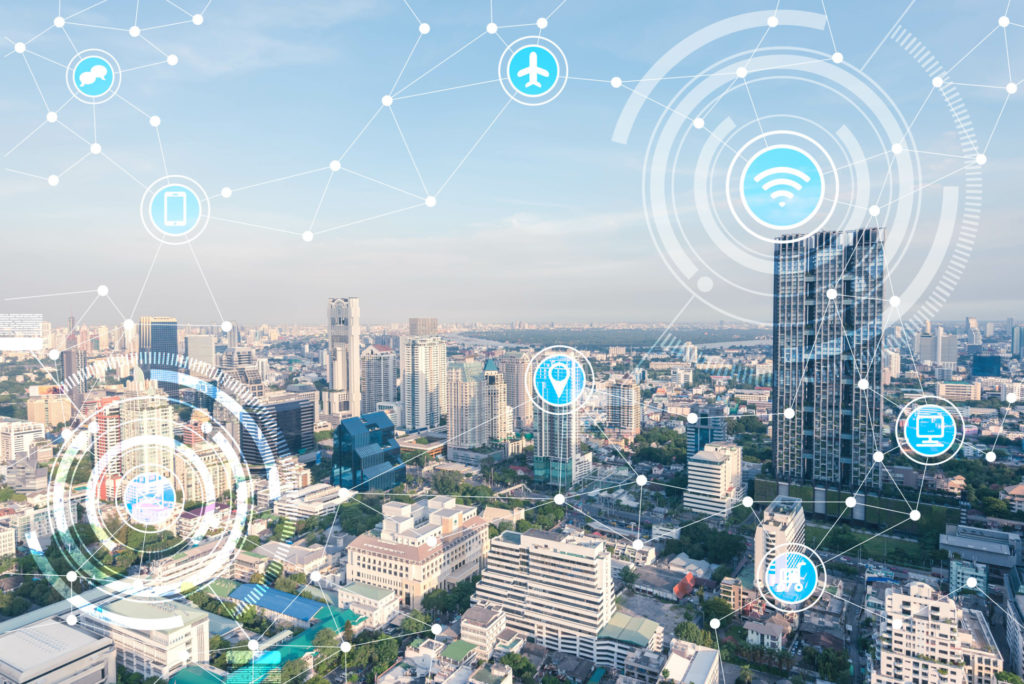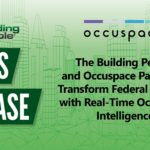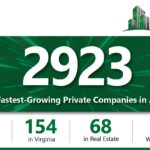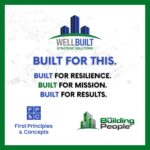
The movement to make facilities more energy-efficient and environmentally friendly is gaining momentum daily. With this movement has come the development, maturity, and immense growth of the smart buildings industry. Most people have probably heard the term “smart building,” but they may not be sure exactly what makes a building “smart.” Simply put, smart buildings are “systems of systems” wherein Operational Technology (OT) communicates through a building or portfolio’s Information Technology (IT) network, and from there, can affect a virtual, single point of control for all equipment and building systems. Once effectively implemented, a smart buildings platform with normalized and effective communications can be further integrated into business management systems in the built portfolio, such as asset and portfolio management systems, integrated workplace management systems, Automated Fault Detection (AFDD), and energy and power management systems.
Integration
Smart Buildings are effectively well-mapped integrations of OT devices and the software/firmware that run them, including:
- HVAC Controls
- Building Automation/Building Control Systems
- Physical Access Control Systems (PACs)
- Elevators
- Energy Management Control Systems
- Lighting Controls
- Voice Networks
- Audio Visual
- Power Management
- Video Surveillance & Distribution
- Access Controls
- Fire Alarm Controls
- Conference Room/Workspace Booking Systems
- Digital Signage
- Occupancy/Indoor Air Quality Sensors
Building Monitoring
The core of any smart building architecture are the controls that operate, and optimize, operation of the mechanical systems, historically known as Building Control Systems (BCS) or, more currently, Building Automation Systems (BAS). BAS/BCS controls are used for inside temperatures, outside temperatures, CO2 levels, building occupancy, and data from utility companies to optimize the use of the HVAC system for maximum occupant comfort while using the minimum amount of electricity. They generally are programmed with the ingrained logic and Sequences of Operations (SOO), which keep sophisticated mechanical systems operating. Other significantly prevalent control systems include lighting controls involving motion sensors to turn lights off and on based on occupancy, light levels adjusted based on natural light levels, and light systems that can be controlled remotely to maximize lighting efficiency and minimize electricity use. Next-generation controls can even be tuned to “biologically correct” colors mapped to the natural ambient light outside, producing, according to prevailing research, more productive and healthier occupants. These are just a few examples that give you an idea of what smart building controls do and how they contribute to the overall goal of increasing efficiency, reducing energy use, and extending the lifecycle of building systems.
Benefits
The benefits of smart building systems are wide-ranging. They help improve the efficiency of every aspect of the built environment, saving energy, time, and money. Overall, here are the main benefits an organization will see from the wide use of smart buildings systems:
- Energy and Operating Cost Savings
- Increased Equipment Life Cycles
- Increased Building Security and Safety
- Increased Occupant Comfort
- Enhanced Government Compliance
- Healthy Buildings and Occupant Centric Management
- Constant/Continuous Commissioning of Mechanical Systems
These benefits lead organizations to obtain a greener and more energy-efficient built environment that saves them money in the long run. In today’s job market, these things are essential because employees want a positive work culture and a healthy work environment where they’re not only comfortable but safe, secure, and healthy. Green buildings are here to stay, and smart buildings are leading the way to a better place to live and work, inside and out, all while being more efficient and providing a sustainable future.
The Building People team is a nationally recognized and award-winning leader in the clean energy and sustainability revolution. We are experts in leveraging technology to solve problems in the built portfolio at scale; our unique offering is tailored to each client’s portfolio and business problems. We further believe that an occupant-centric building management paradigm will lead to more productive and engaged occupants, and ultimately lead to the increased value of the portfolio itself.
Our master systems integrators are leading the way with this revolution, which integrates building automation, IoT smart building controls, life safety, telecommunications, and facilities management systems into an intuitive management system that works together to provide maximum efficiency in your built environment.
Whether you are taking that first step towards a 21st-century smart building system upgrade or striving for a fully automated smart building system for your entire built environment, we will get you there. Contact us today to see how we can help your organization with its smart building project.







